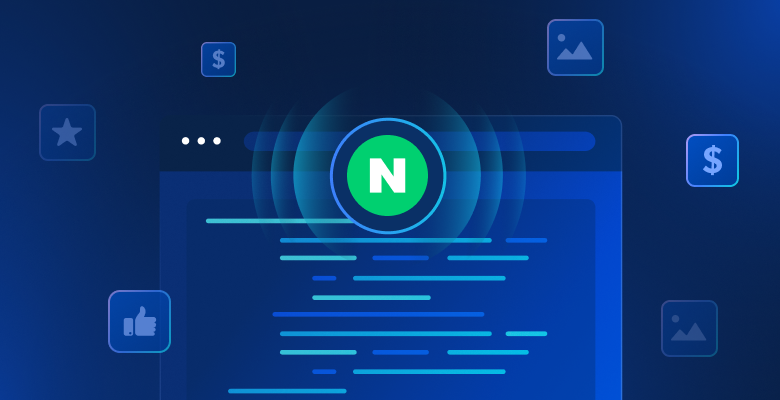This article aims to provide a full understanding of what an HTTP proxy is, how it functions, types of HTTP Proxy, applications, benefits, and potential security implications.
An HTTP proxy is a proxy server that acts as an intermediary between a client device and a web server. It acts as a gateway through which client devices can access web content, and it facilitates communication between the client and the web server.
How Does an HTTP Proxy Work?
As depicted in the diagram, When a client device sends a request to access a website or any other web-based resource, the request is first intercepted by the HTTP proxy server. The proxy server then forwards the request to the appropriate web server on behalf of the client. Once the web server processes the request and generates a response, the proxy server receives the response and forwards it back to the client device.
HTTP proxies can be used for content filtering, performance optimization, and maintaining privacy. In each scenario, the HTTP proxy serves as a critical intermediary, intercepting, evaluating, and forwarding HTTP requests and responses to facilitate secure, efficient, and reliable communication between clients and servers.
Types of HTTP Proxies
1. Forward Proxy
A forward proxy is an intermediary between user devices and the public Internet.All web browsing traffic is routed through theforward proxy, where it will inspect it and apply corporate security and acceptable use policies. If the traffic is approved, the proxy will send the request to its destination on the client’s behalf and perform the same actions for any responses.
2. Reverse Proxy
While a forward proxy sits between the client and the public internet, a reverse proxy sits in front of web servers and intercepts client requests. As depicted by the diagram, all the requests from the user’s device will go through reverse proxy and reverse proxy will forward the requests for web servers.
3. Transparent Proxy
A transparent proxy is a type of proxy server that intercepts and handles network traffic without requiring any configuration on the client side. In other words, it operates transparently, without users needing to modify their settings or be aware of its existence.
When a transparent proxy is deployed, it sits between the client and the server, intercepting all incoming and outgoing traffic. Unlike explicit proxies, which require manual configuration on the client side, transparent proxies are usually implemented at the network level, often within a firewall or gateway device.
4. High Anonymity Proxy
A high anonymity proxy is a type of proxy server that conceals the user’s IP address and makes it appear as if the requests originate from the proxy server itself. This type of proxy provides a higher level of anonymity compared to other proxies.
Here are some key features of high anonymity proxies
- Hide IP Address- High anonymity proxies will mask the user’s IP address, preventing websites or services from detecting the true origin of the request. This helps protect the user’s identity online.
- Secure Communication- They often use encryption to secure the communication between the client and the proxy server, adding an extra layer of security.
Benefits of Using an HTTP Proxy
Here are the five major benefits of utilizing HTTP proxies:
1. Enhanced Security
HTTP proxies can enhance security by acting as an intermediary between the client and the internet. They can inspect and filter incoming and outgoing traffic, blocking potentially malicious content, malware, or phishing attempts. Proxies can enforce security policies by restricting access to certain websites or protocols based on predefined rules, helping to prevent unauthorized access to sensitive information or resources. Furthermore, proxies can be configured to encrypt traffic, providing an extra layer of security when transmitting sensitive data over untrusted networks.
2. Improved Performance
A CDN (Content Delivery Network) uses HTTP proxies to optimize content delivery. When a user requests a web page or multimedia content, the CDN’s HTTP proxy intercepts the request, routes it to the nearest edge server hosting it, and caches the response. Frequent requests for the same content will be served directly from the cache.
3. Anonymity and Privacy
Users can use an anonymous HTTP proxy to mask their IP address and preserve their privacy while browsing the internet. When the user sends an HTTP request through the proxy, the proxy relays the request to the target server on behalf of the user, obscuring their real IP address in the process. This enables the user to access online content anonymously.
4. Content Filtering and Access Control
In an organization, an HTTP proxy can enforce content filtering policies and restrict access to certain websites.
When an employee attempts to access a blocked website, the HTTP proxy intercepts the request, evaluates it against the organization’s filtering rules, and either allows or blocks the request based on the policy.
5. Traffic Monitoring and Analysis
Proxies provide a centralized point for monitoring and analyzing network traffic. This will allow administrators to gain insights into users’ browsing habits, bandwidth usage, and security threats. Proxies can help identify potential security vulnerabilities, compliance violations, or performance issues within the network by logging and analyzing HTTP requests.
Use Cases of HTTP Proxies
1. Enterprise Networks
HTTP proxies are commonly used in enterprise networks to manage and secure internet access for employees. Proxies can enforce security policies, filter web content, and monitor traffic to protect against threats such as malware, phishing, and data exfiltration.
Furthermore, proxies can optimize bandwidth usage by caching frequently accessed web content, reducing the load on the organization’s internet connection and improving overall network performance.
2. Content Delivery Networks (CDNs)
A content delivery network (CDN) is a geographically distributed group of servers that caches content to end users.
HTTP proxies are often used in Content Delivery Networks. HTTP proxies deliver web content efficiently to users around the world. Proxies located in different geographic regions cache and serve content closer to end-users, reducing latency and improving website performance.
By distributing content across multiple proxy servers, CDNs can handle large volumes of traffic and mitigate the impact of sudden spikes in demand, ensuring reliable and fast delivery of web content.
3. Web Application Firewalls (WAFs)
WAFs use HTTP proxies to inspect and filter incoming web traffic, protecting web applications from the below types of attacks.
- Injection attacks
- Broken Authentication
- Sensitive data exposure
- XML External Entities (XXE)
- Broken Access control
- Security misconfiguration
- Cross Site Scripting (XSS)
- Insecure Deserialization
Proxies will analyze HTTP requests and responses. It will apply security rules to block malicious traffic while allowing legitimate requests to pass through. This helps prevent unauthorized access, data breaches, and other security incidents targeting web applications.
4. Anonymity Networks
HTTP Proxies in anonymity networks encrypt and relay traffic through multiple nodes, making it difficult for adversaries to trace the origin or destination of the communication. As a result, users can access the internet anonymously and circumvent censorship or surveillance.
HTTP proxies are crucial to anonymity networks like Tor, facilitating the routing and anonymization of internet traffic through a series of intermediary relays. HTTP proxies in anonymity networks can help users achieve anonymity and privacy while accessing online resources using onion routing and end-to-end encryption.
5. Load Balancing and Scalability
HTTP proxies are often used for load balancing and scalability in distributed systems. With the help of incoming requests distributed across multiple backend servers based on predefined algorithms, such as round-robin or least connections.
By evenly distributing the workload among backend servers, proxies improve resource utilization, reduce response times, and ensure high availability and fault tolerance. Proxies can also dynamically adjust load-balancing strategies based on server health and performance metrics.
Conclusion
In conclusion, understanding HTTP proxies offers insights into their important role for different use cases. While they serve numerous purposes across various digital environments, navigating their complexities and security implications necessitates expertise.
Bright Data’s HTTPS proxies elevate this utility by integrating robust encryption, offering a secure, sophisticated solution that encapsulates the benefits of traditional HTTP proxies while ensuring data confidentiality. Ideal for businesses and individuals prioritizing security without sacrificing efficiency, Bright Data’s HTTPS proxies represent a pivotal resource in the modern digital landscape, ensuring safe, encrypted, and anonymous web interactions.






